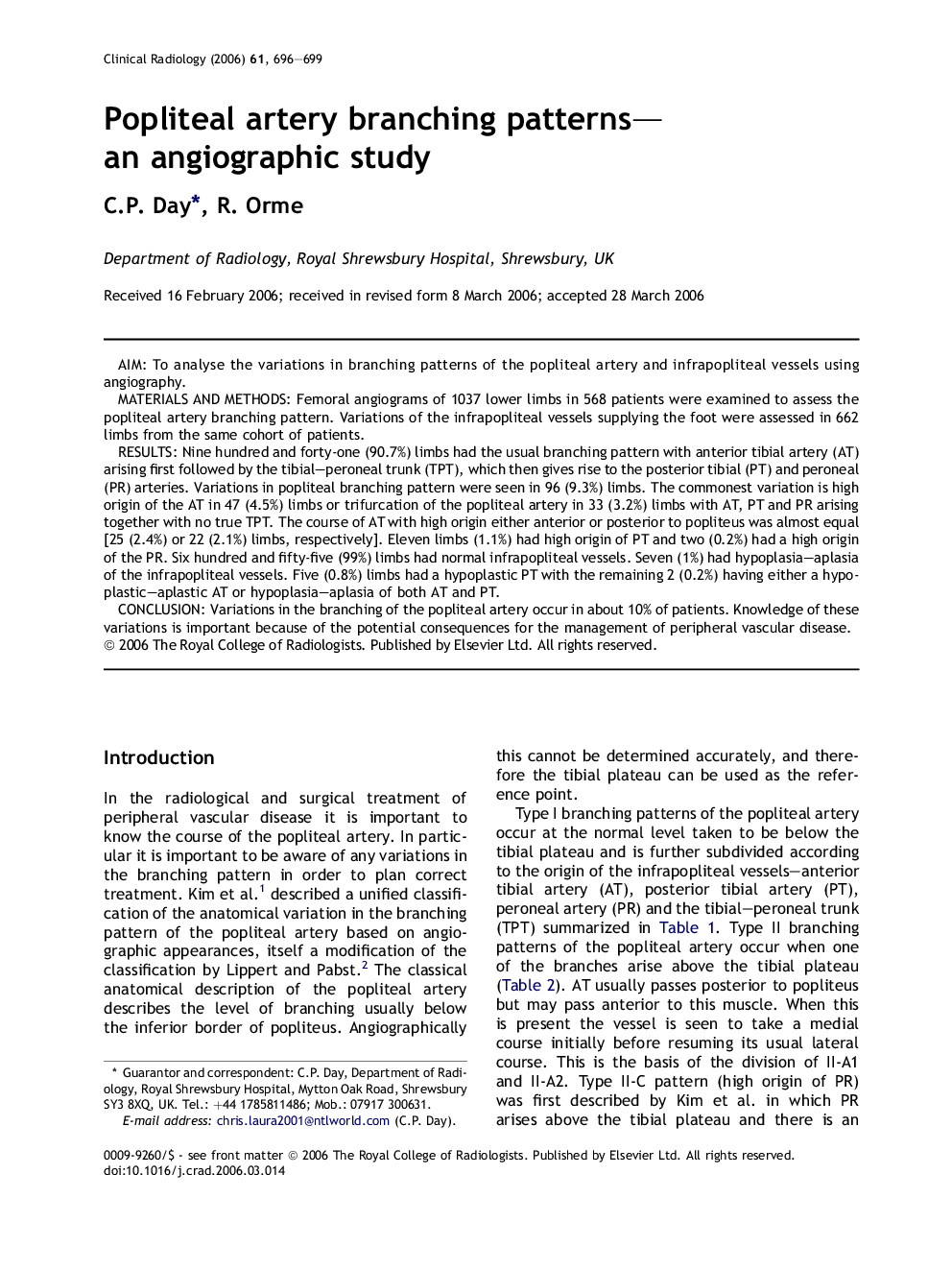| Article ID | Journal | Published Year | Pages | File Type |
|---|---|---|---|---|
| 3984197 | Clinical Radiology | 2006 | 4 Pages |
AIMTo analyse the variations in branching patterns of the popliteal artery and infrapopliteal vessels using angiography.MATERIALS And METHODSFemoral angiograms of 1037 lower limbs in 568 patients were examined to assess the popliteal artery branching pattern. Variations of the infrapopliteal vessels supplying the foot were assessed in 662 limbs from the same cohort of patients.RESULTSNine hundred and forty-one (90.7%) limbs had the usual branching pattern with anterior tibial artery (AT) arising first followed by the tibial–peroneal trunk (TPT), which then gives rise to the posterior tibial (PT) and peroneal (PR) arteries. Variations in popliteal branching pattern were seen in 96 (9.3%) limbs. The commonest variation is high origin of the AT in 47 (4.5%) limbs or trifurcation of the popliteal artery in 33 (3.2%) limbs with AT, PT and PR arising together with no true TPT. The course of AT with high origin either anterior or posterior to popliteus was almost equal [25 (2.4%) or 22 (2.1%) limbs, respectively]. Eleven limbs (1.1%) had high origin of PT and two (0.2%) had a high origin of the PR. Six hundred and fifty-five (99%) limbs had normal infrapopliteal vessels. Seven (1%) had hypoplasia–aplasia of the infrapopliteal vessels. Five (0.8%) limbs had a hypoplastic PT with the remaining 2 (0.2%) having either a hypoplastic–aplastic AT or hypoplasia–aplasia of both AT and PT.CONCLUSIONVariations in the branching of the popliteal artery occur in about 10% of patients. Knowledge of these variations is important because of the potential consequences for the management of peripheral vascular disease.
